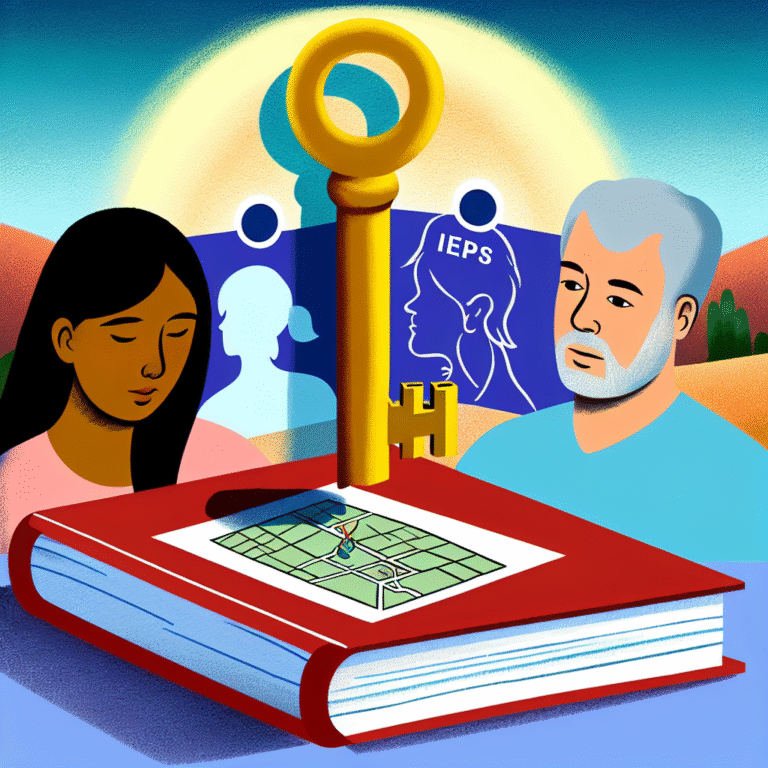
Introduction
The journey from adolescence to adulthood is one of the most transformative phases in human life. It’s an essential transition marked by emotional growth, social development, and a burgeoning sense of identity. What if we could glean insights from decades of longitudinal studies on this critical phase? As researchers delve deeper into this period, they uncover powerful lessons that can shape our understanding of how young people evolve into resilient adults. In this article, we explore the concept of "From Adolescence to Adulthood: Lessons Learned from Decades of Longitudinal Data," revealing key insights and findings that illuminate this dynamic transition.
Understanding Longitudinal Data
Longitudinal data refers to research that follows the same subjects over an extended period, collecting information at various intervals. This methodology provides an invaluable perspective on how individuals change and develop over time, making it particularly relevant for studying the transition from adolescence to adulthood.
Why Longitudinal Studies Matter
Capture Change Over Time: Unlike cross-sectional studies, which offer a snapshot, longitudinal studies track changes that occur, enabling researchers to observe trends, causations, and consequences.
Identify Risk and Protective Factors: These studies help identify factors that either contribute to or mitigate against negative outcomes, such as mental health disorders or substance abuse during adolescence.
- Informed Policy and Program Development: Insights derived from longitudinal data guide effective interventions and policies addressing youth behavior, education, and mental health.
The Adolescent Brain: A Period of Transformation
Developmental Changes
Adolescence is marked by significant neurological changes. The prefrontal cortex, responsible for decision-making, is still maturing, while the limbic system—linked to emotions—develops rapidly. Understanding these changes can explain why adolescents may engage in riskier behavior.
Case Study: The Dunedin Multidisciplinary Health and Development Study
The Dunedin study, which tracked 1,037 individuals born in New Zealand in 1972-1973, is one of the most influential longitudinal studies. Researchers found that emotional regulation and impulse control significantly impact adolescent behavior. Those who developed strong emotional regulation skills were less likely to engage in risky behaviors as they transitioned into adulthood.
Analysis
This study highlights the importance of emotional awareness and resilience during adolescence, suggesting that programs promoting emotional intelligence can yield positive long-term outcomes.
The Role of Relationships
Adolescence is also characterized by shifting social dynamics. Relationships with peers, family, and mentors can profoundly influence an adolescent’s identity and choices.
Findings from the National Longitudinal Study of Adolescent to Adult Health (Add Health)
Add Health data reveal that adolescents with supportive relationships are more likely to pursue higher education and report better mental health in adulthood. Conversely, those immersed in toxic relationships might experience various adverse outcomes.
Chart: Impact of Supportive Relationships on Educational Attainment
| Relationship Type | Positive Impact on Education | Negative Outcomes |
|---|---|---|
| Supportive Family | High | Low self-esteem |
| Positive Peer Relationships | Very High | Increased risk behavior |
| Toxic Relationships | Low | Anxiety and depression |
Educational Pathways
The Connection Between Education and Well-Being
Education is a pivotal factor in adolescent development. Research indicates that educational engagement is closely linked to future success and stability.
Insights from the Youth Development Study
Conducted over several years, this study followed individuals from adolescence into their mid-thirties and revealed a clear correlation between academic achievements during adolescence and economic stability in adulthood. Those who completed higher education reported improved quality of life and health outcomes.
Case Study: A Longitudinal Look at Early Education Interventions
A longitudinal analysis of early childhood education interventions, such as the High/Scope Preschool Study, demonstrated that children who participated in high-quality early education programs were more likely to graduate high school and secure employment as adults.
Analysis
The findings emphasize the importance of investing in early education as a strategy for laying a solid foundation for successful and fulfilling adult lives.
Mental Health in Transition
The Importance of Mental Health Awareness
Adolescence is often a breeding ground for mental health issues. Understanding the trends and triggers through longitudinal studies provides a framework for better support systems.
The Positive and Negative Effects of Mental Health
Research from the Pittsburgh Youth Study shows that untreated mental health problems during adolescence can lead to complications in adulthood, such as persistent depression, substance abuse, and relationship difficulties.
Case Study: The Growing Up in New Zealand Study
This ongoing study investigates mental health trends and their implications. Findings indicate that regular mental health check-ups and support can help mitigate long-term mental health issues and promote resilience.
Analysis
The data accentuate the need for early intervention strategies, ensuring adolescents have access to mental health resources that can positively influence their adult life.
The Impact of Socioeconomic Factors
Understanding the Role of Environment
Socioeconomic status significantly impacts an individual’s development and opportunities. Longitudinal studies consistently reveal that wealthier adolescents have access to more resources, leading to better outcomes.
The National Longitudinal Survey of Youth
This survey has provided valuable insights into how socioeconomic status impacts various life dimensions. The analysis shows that adolescents from low-income families are less likely to pursue higher education and experience poorer health outcomes.
Table: Socioeconomic Status and Life Outcomes
| Socioeconomic Status | Higher Education Likelihood | Mental Health Outcomes | Employment Status |
|---|---|---|---|
| Low | Low | Poor | Unstable |
| Middle | Moderate | Moderate | Stable |
| High | High | Good | Stable |
Building Resilience: Lessons from Longitudinal Studies
What Makes a Resilient Adult?
Resilience is not merely an innate trait; it can be developed through various experiences and support systems during adolescence.
The Resilience Project
This project examined various factors contributing to adult resilience and found that strong family ties, community support, and healthy coping mechanisms are critical elements.
Insights on Building Resilience
Encouraging Open Communication: Embedding resilience-building curricula in schools emphasizes the importance of communication skills, enabling adolescents to express their feelings and challenges.
- Providing Mentorship Programs: Fostering supportive relationships through mentorship can guide young individuals toward positive life choices, emboldening them to tackle future challenges.
Conclusion
The transition from adolescence to adulthood is a multifaceted journey influenced by various internal and external factors. From the pivotal role of emotional intelligence and the significance of strong relationships to the impact of education and socioeconomic status, the lessons learned from longitudinal studies offer profound insights.
As we reflect on "From Adolescence to Adulthood: Lessons Learned from Decades of Longitudinal Data," it becomes clear that early interventions, robust support systems, and access to resources are paramount for guiding adolescents toward a successful and fulfilling adulthood. With these insights, we must advocate for policies that empower young people, ensuring a brighter future for generations to come.
FAQs
1. What is a longitudinal study, and why is it important for understanding adolescence?
Longitudinal studies track the same individuals over time, allowing researchers to observe changes and patterns in behavior, mental health, and social dynamics, which are crucial for understanding adolescent development.
2. How can emotional intelligence affect adolescent outcomes?
Adolescents with high emotional intelligence tend to have better emotional regulation, which can lead to healthier relationships and fewer risky behaviors, positively affecting their transition into adulthood.
3. What role do relationships play during adolescence?
Supportive relationships provide adolescents with a safety net, fostering resilience and encouraging positive choices, while toxic relationships can lead to adverse outcomes.
4. Why is early education crucial for adolescent success?
Access to high-quality early education lays a foundation for lifelong learning and economic stability, greatly influencing educational and occupational outcomes in adulthood.
5. How can parents and educators support adolescents during this transition?
Encouraging open communication, providing mentorship, and fostering emotional intelligence are all effective strategies for supporting adolescents and guiding them toward successful adulthood.
In conclusion, we learn that the transition from adolescence to adulthood is deeply influenced by various factors elucidated through longitudinal studies. Understanding these lessons is essential for promoting the well-being and success of future generations.














